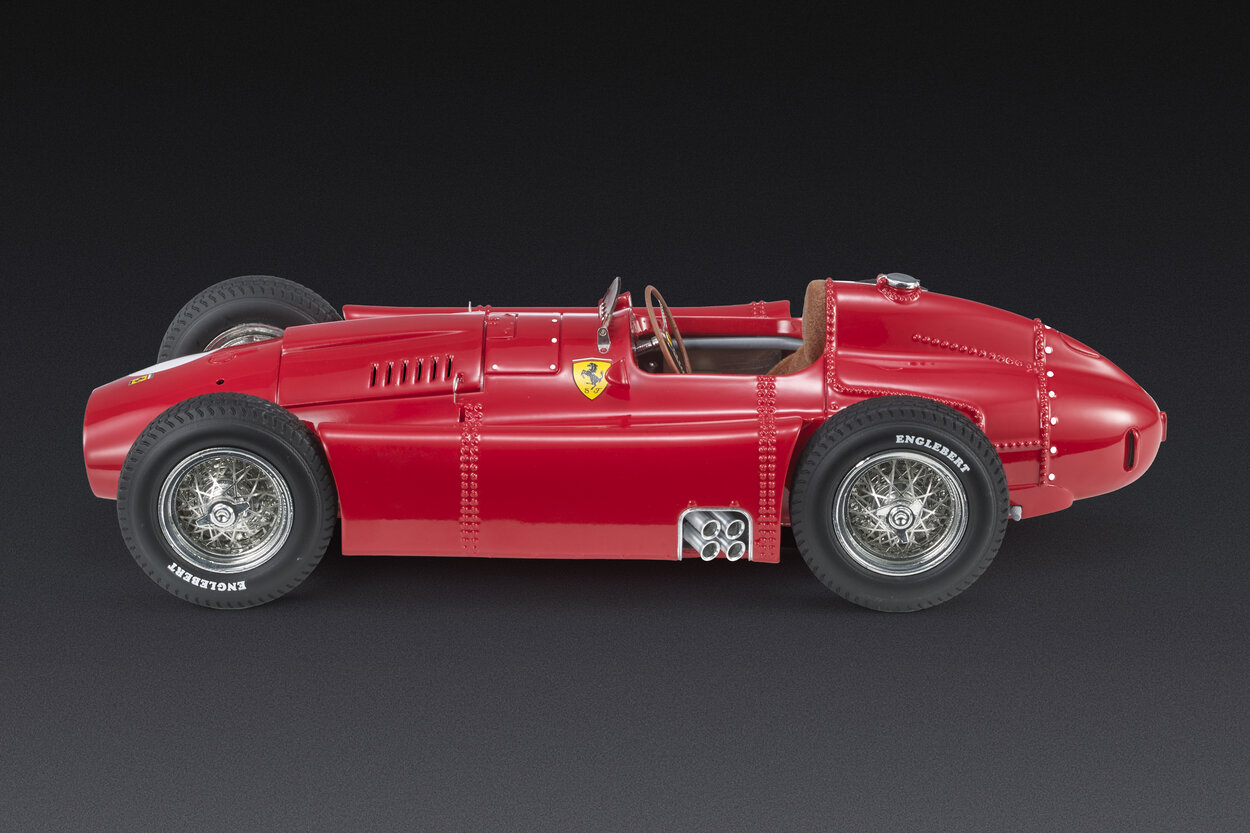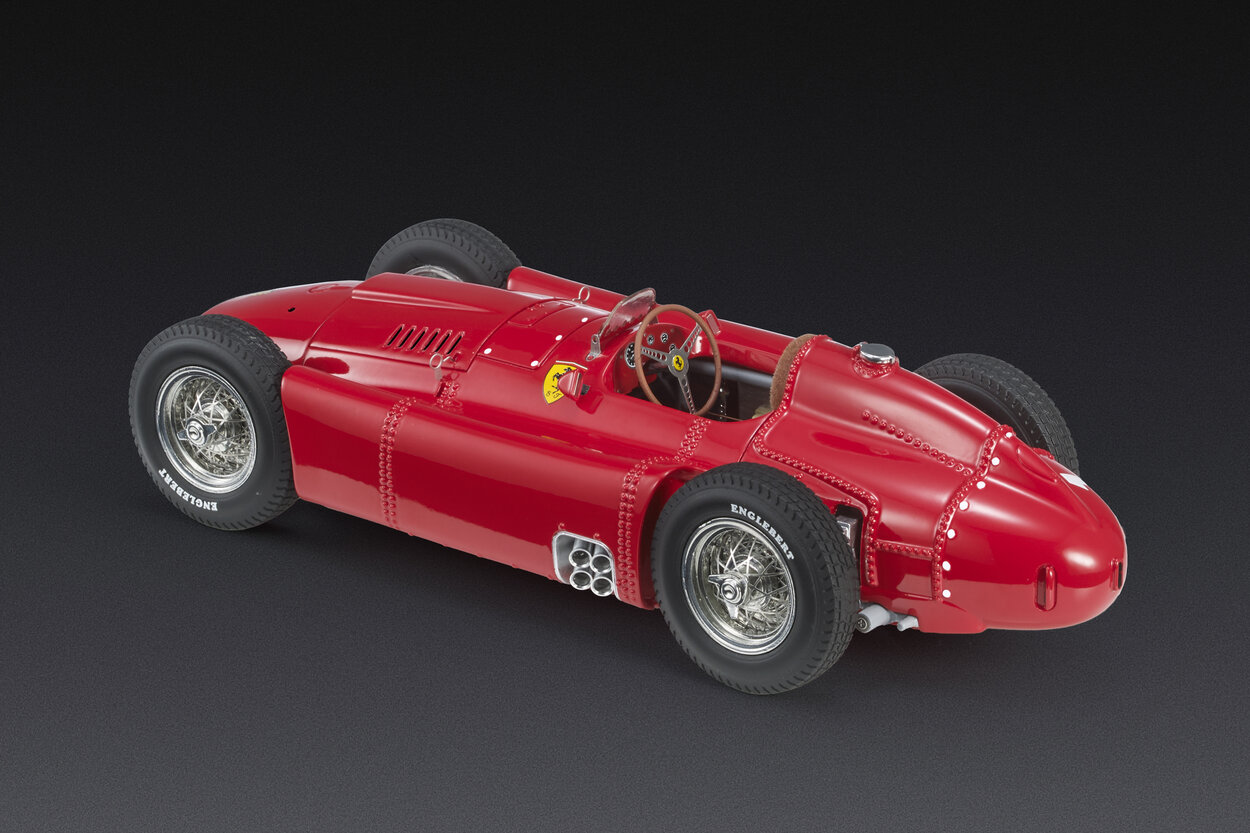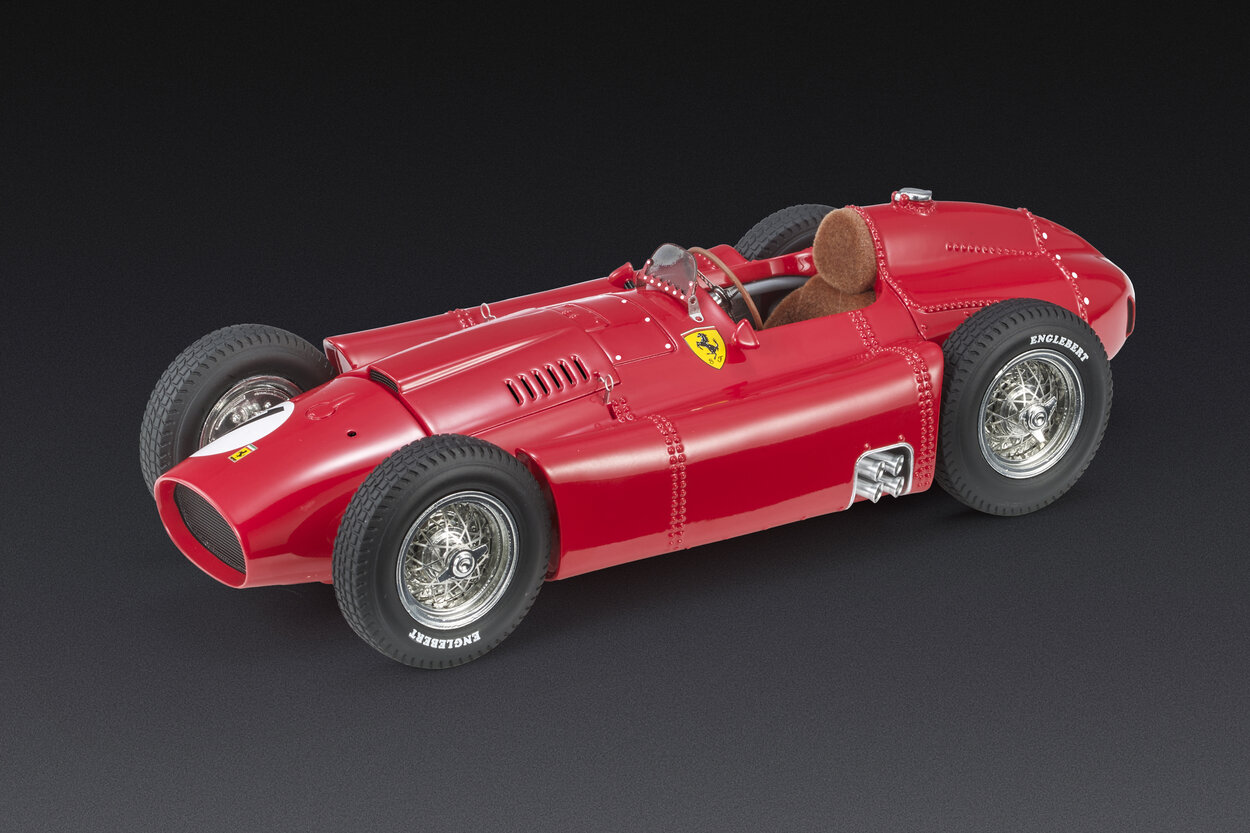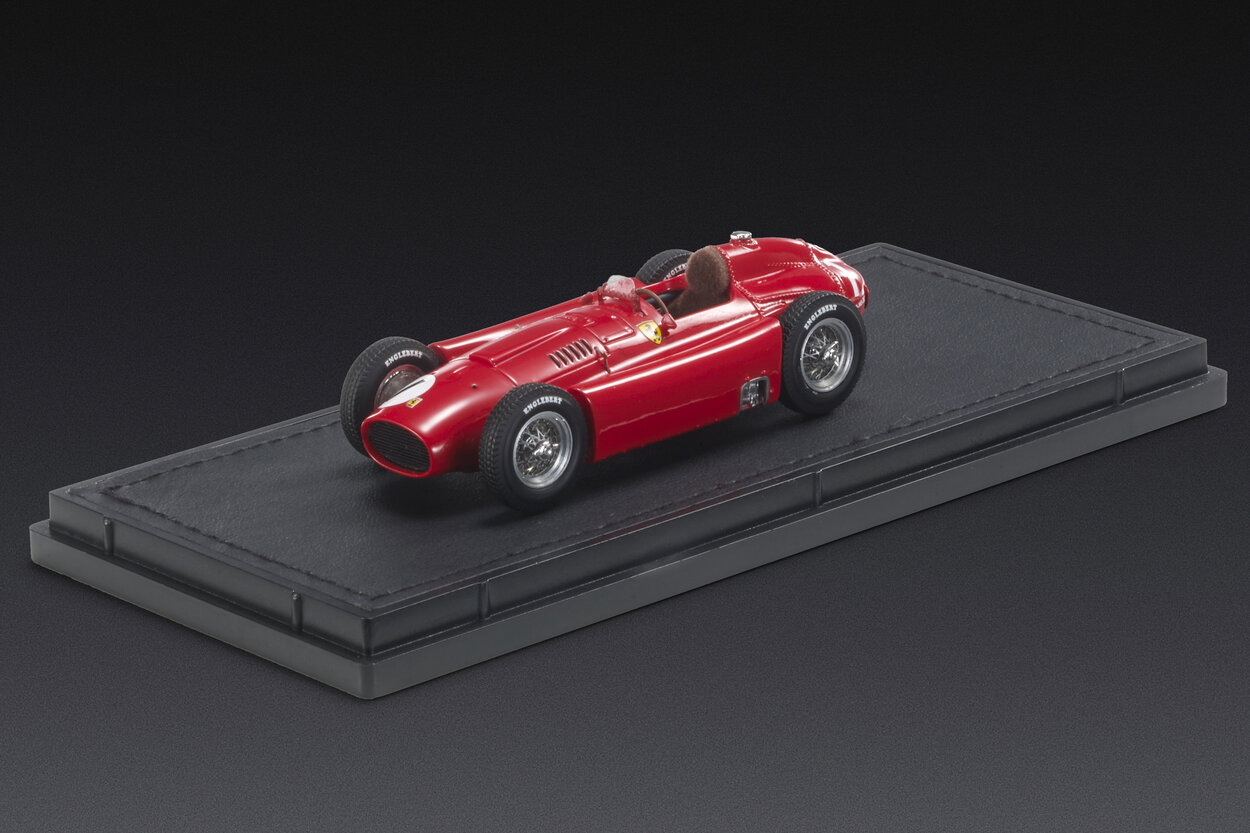Ferrari Lancia D50
The single-seater with which Ferrari wins the Formula 1 World Championship in 1956 is actually a Lancia. After the death of Alberto Ascari at the end of May 1955, Lancia decides to withdraw from racing. The withdrawal of the Turin-based manufacturer would mean the end of the life cycle of a single-seater that, in its albeit short activity, has shown enormous potential. At this point, the Italian Automobile Club intervenes, wanting the Lancia equipment to be used by another Italian team, namely Ferrari, in its relentless battle against the unbeatable Mercedes W196R.
The ACI devises and finalizes an agreement whereby Lancia gratuitously transfers to Ferrari all the racing equipment in its possession – including six perfectly functional single-seaters and two additional chassis – and Fiat commits to paying Ferrari 50 million lire per year for five years. At this point, the D50 effectively becomes a Ferrari. After a surreal handover ceremony in Turin, which Enzo Ferrari does not attend, the cars and spare parts head to Maranello.

Drivers:
Juan Manuel Fangio: The 1956 season is when the Argentine champion wins his fourth world title. However, despite three victories and two podium finishes, the year at the wheel of the Ferrari Lancia-D50 is not peaceful for El Chueco, who, for some reason, starts to believe that Enzo Ferrari is sabotaging him.
Eugenio Castellotti: The Italian driver, who had already driven the D50 in the livery of Lancia the previous season, experiences a troubled season. His only highlight comes with a second-place finish in the French Grand Prix at Reims.
Peter Collins: At Monza, during the Italian Grand Prix, when he handed over his D50 to Fangio so he could finish the race and secure the world title, Peter made one of the most beautiful gestures remembered in motorsport. However, Collins also achieved victory in the Belgian and French Grand Prix with the D50.
Luigi Musso: In the Argentine Grand Prix, Musso secured his only Formula 1 victory, sharing the win with Fangio, when he handed over the wheel of the D50 to him in Buenos Aires.
Alfonso de Portago: Second place shared with Collins in the British Grand Prix.
Our model cars:

The D50 is a cutting-edge single-seater. In terms of weight, it is the lightest in circulation – 30 kg lighter than the Ferrari 625, and even 70 kg lighter than the Mercedes. The engine is a 90-degree V8 largely built from lightweight alloys. The main characteristic is the fuel tanks, located on both sides of the single-seater, projecting beyond the body of the car. The unprecedented placement of the tanks will help improve the aerodynamic penetration of the single-seater, but as the tanks empty, the car will lose stability.


